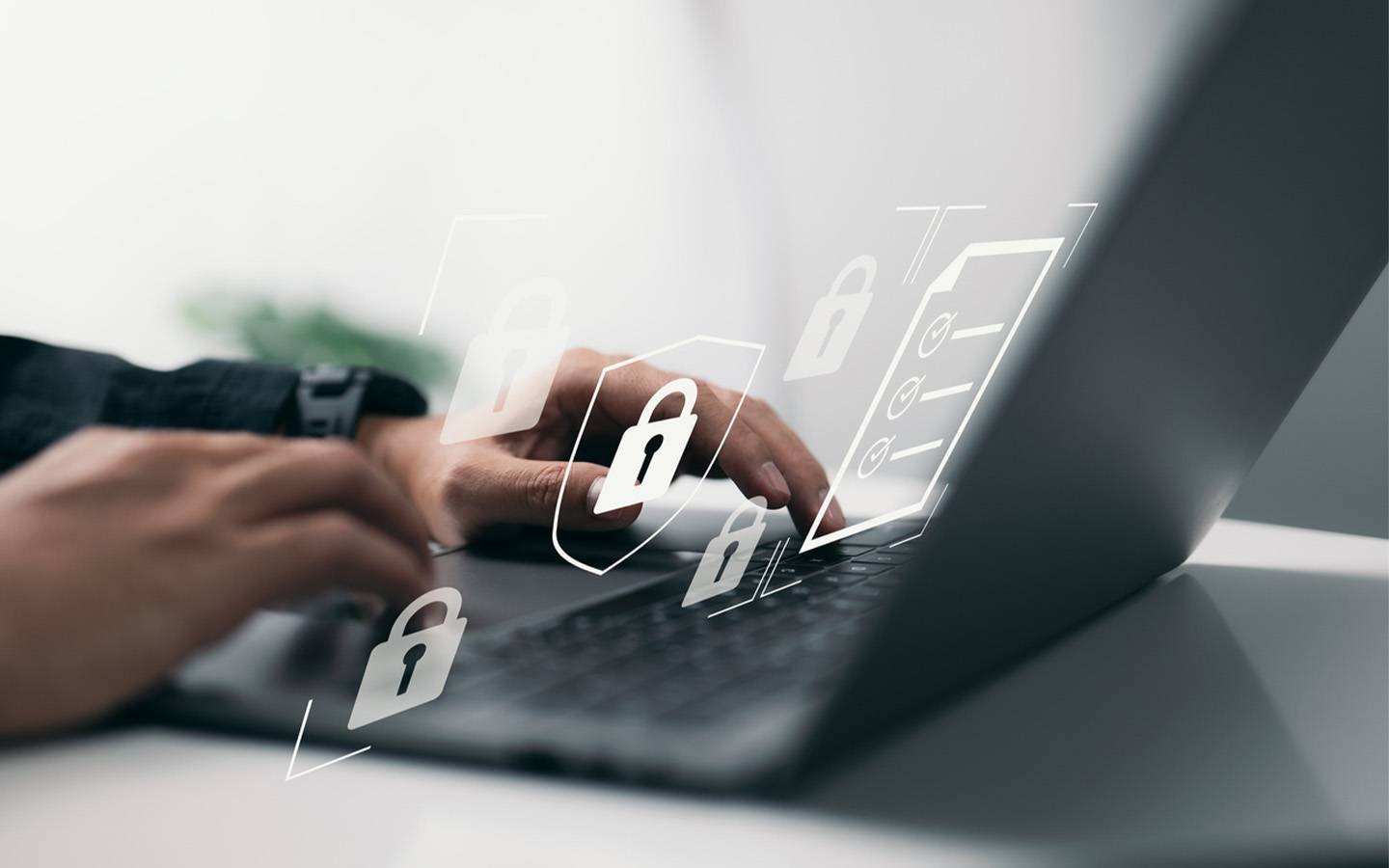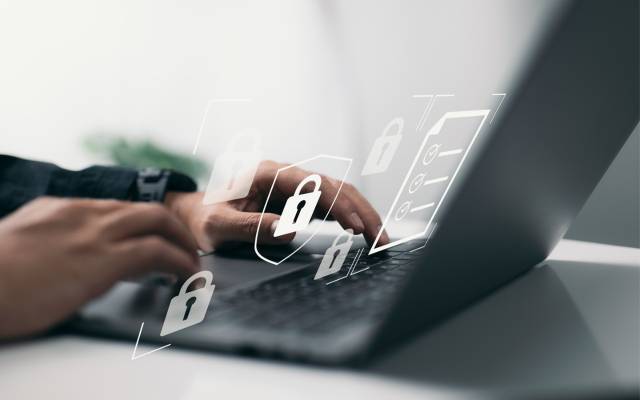Working from the office has long been the norm. However, as the COVID-19 pandemic swept across the globe, corporate offices closed and organizations pivoted to sending employees home to work remotely. While at that time it was a quick fix to keep employees safe and businesses running, it’s now clear that a remote workforce is here to stay.
Working from home offers many benefits for remote employees and businesses. But there are also endpoint security challenges that must be addressed to safeguard sensitive company data when staff members access your network when not at the office.
What Is Endpoint Security?
In a remote work setting, endpoint security is essential for safeguarding sensitive data and your company's assets. Employees utilize PCs, laptops, cellphones, and other mobile devices to access company networks and resources. Endpoint security services keep an eye on how well these devices are protected and are intended to swiftly identify, evaluate, stop, and contain attacks from external devices linked to the company network.
Over 50% of employees use personal devices to access corporate applications during remote working, including software and cloud infrastructure. The more staff members use their own mobile devices and laptops to complete work tasks, the more your organization is open to threats from attackers.
The rise in remote work coupled with a lack of adequate network security and weak remote access authentication has hackers increasingly focused on vulnerable endpoints. Compromised endpoints make up 28% of cybersecurity incidents in remote work environments. These security risks make it essential for businesses to fortify defenses where it matters most.
Understanding Endpoint Detection and Protection Solutions
Two critical components of endpoint security are endpoint protection platforms (EPP) and endpoint detection and response (EDR) solutions.
EPP offers a preventive defense, stopping security threats before they can infiltrate endpoint devices. These platforms use various security measures—including antivirus software, firewalls, and anti-malware and ransomware protection—to block known and unknown threats from compromising personal devices.
EDR solutions take a more proactive approach, focusing on detection and response. These options identify and respond to security threats that might have evaded EPP measures. EDR advanced techniques, like machine learning, detect suspicious activities and quickly initiate a response to contain potential threats.
Remote Workforce Challenge
The traditional office is being redefined. Post-pandemic, nearly half of knowledge workers spend at least a portion, if not all, of their week, working from home. With this shift, protecting the company's infrastructure and data is a safety and security challenge.
Multiple Complex Endpoints
The primary challenge of a remote workforce is the complex number of endpoints that must be detected and protected. With team members working from various locations and using different devices with varying security configurations, software versions, and other vulnerabilities, it isn't easy to maintain consistent security.
Unsecured Data Access and Sharing
Greater corporate network and cloud access for remote employees means increased security risks if not effectively managed. Without strong security models and proper training, employees can inadvertently leave your organization open to cyber attacks accessing sensitive data. Storage-as-a-Service provides additional protection for multi-cloud environments, including those on public and private platforms.
Increased Cyber Threats and Attacks
During the pandemic, there was a 238% increase in cyber attacks targeting at-home employees. In 2020, nearly 20% of businesses reported breaches due to a remote worker. A data breach where remote work was the primary cause costs organizations over $1 million more than if the same attack had happened in the office. Hackers use sophisticated techniques to exploit vulnerabilities in endpoints and gain unauthorized access to sensitive data.
Lack of Employee Training and Awareness
A hybrid workforce demands a higher level of employee awareness and cybersecurity training. A third of organizations don’t provide any cybersecurity training. Remote employees may encounter unfamiliar situations and networks they wouldn’t in a traditional office setting, from home networks to the local coffee shop. They could fall victim to phishing scams, malicious websites, or other social engineering attacks without proper training.
Inconsistent Compliance Monitoring
Remote endpoints may not always be connected to the company network, making it challenging to monitor security status and apply necessary updates promptly. IT security professionals can monitor mobile devices and laptops and even remotely apply updates to users with the use of remote endpoint security software and solutions.
You can create a secure hybrid work environment by addressing these challenges and implementing strong endpoint protection measures. These services allow you to embrace remote work while safeguarding your organization’s critical assets from ever-evolving cyber threats.
Best Practices for Remote Work Security and Endpoint Protection
Implementing effective remote work security and endpoint protection strategies can protect your data. The following best practices will help secure remote work environments throughout your organization.
Explore Comprehensive Endpoint Security Solutions
Consider a comprehensive endpoint security solution that integrates EPP and EDR capabilities. Combined, they provide a multi-layered approach with real-time detection and response capabilities that ensure your endpoints are guarded against various cyber threats, including malware, ransomware, and email phishing attacks. Having robust cloud security can help safeguard your remote workers from ransomware attacks.
Adopt a Zero-Trust Security Model
One of the best practices for multicloud security is a zero-trust security model that assumes every access attempt is potentially malicious. No default trust is granted to end-users who are on the corporate network. Users are authorized, authenticated, and validated before and throughout their time accessing resources.
Offer More Secure Remote Access
Consider providing more secure remote access options for your remote and hybrid employees. For example, a virtual private network (VPN) can encrypt data transmitted between remote devices and your corporate network, protecting it from hackers. Multi-factor authentication provides additional security levels to confirm the end-user's identity and a virtual desktop infrastructure (VDI) allows employees to access company resources in a protected environment. Implementing digital asset management may help you curate resources and control access across the network.
Implement a Patch Management System
Inferior and outdated patching is a common issue for organizations, which leaves your networks and systems open to risk. Create a patch management system for all remote devices accessing your corporate network and resources. Stay current on the latest security updates and automate the deployment of updates to end-users and devices to minimize risk.
Offer Regular Cybersecurity Training
Educate your employees on cybersecurity best practices for remote work—both in and out of the house on unsecured Wi-Fi. Conduct regular training sessions to raise awareness about phishing threats, secure data handling, and safe browsing habits. Encourage employees to report suspicious activities promptly and provide clear protocols for reporting incidents, such as a step-by-step checklist.
Continuously Monitor and Audit for Risk
Deploy advanced remote endpoint management and monitoring solutions to continuously monitor the security posture of remote devices in real-time. Leveraging cloud-based monitoring offers a streamlined and cost-efficient approach to guarantee that applications operate seamlessly. Consistently analyze security logs to promptly detect any potential vulnerabilities and take proactive measures to fortify defenses. Additionally, conduct routine security audits and assessments to gauge the efficacy of your remote work endpoint protection strategies.
Adopting these proactive strategies for remote work endpoint protection can create a secure environment for remote workers. Prioritizing endpoint security creates a culture of cybersecurity that protects your organization’s sensitive data and encourages employees to be prepped.
Take Control of Your Remote Work Endpoint Protection with Seagate
Working from home remains an option for millions of employees. However, they’re susceptible to attacks and data breaches due to unsecured, vulnerable networks. IT teams must take measures to secure personal devices and sensitive data and protect them from threats.
Seagate can help improve your data storage systems, both internally and for private and public cloud needs. For example, Seagate CORVAULT™ allows your organization to store massive amounts of data using Autonomous Drive Regeneration (ADR) to reduce downtime and human intervention, which is crucial if you’re operating in an expanding remote environment.
CORVAULT comes with Seagate Secure™ self-encrypting drive (SED) technology, which includes security updates. That can give your organization peace of mind that sensitive data and resources have end-to-end encryption.
Remote work endpoint protection is no longer nice to have; it's required. Seagate CORVAULT high-density data storage is a vital tool to help ensure your remote and hybrid employees are protected.
Learn more about CORVAULT, Seagate’s secure enterprise data storage system. Talk to a Seagate expert to learn more.







